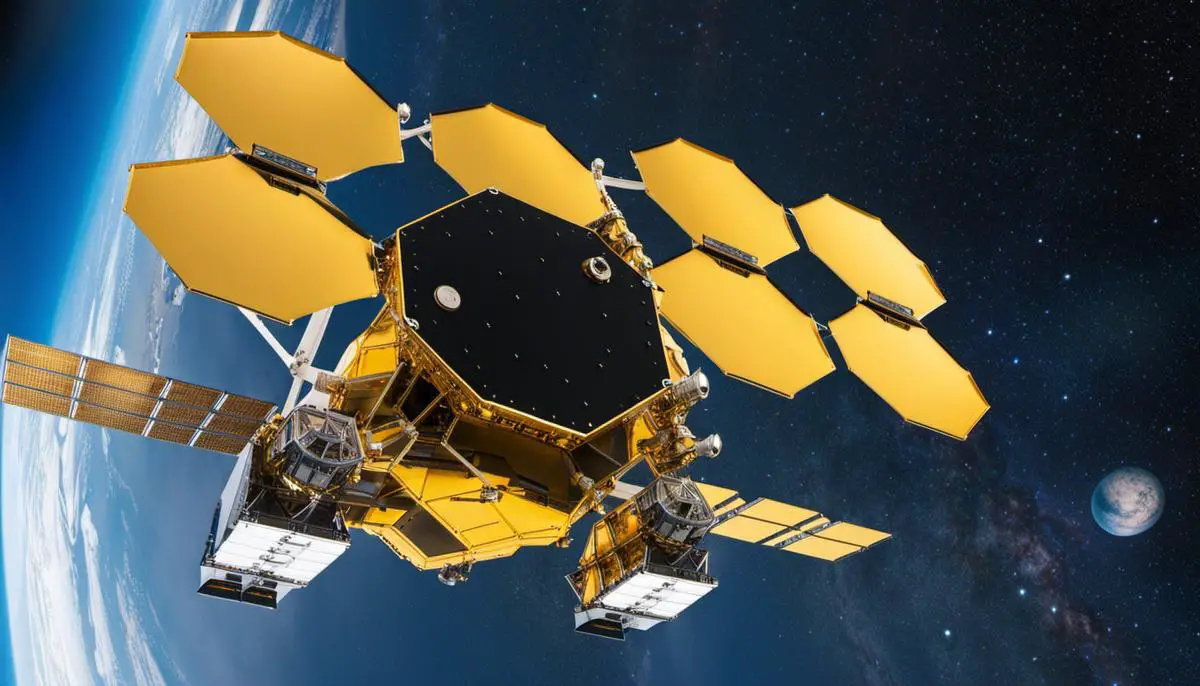Launched into the heavens with a symphony of science and ambition, the James Webb Space Telescope embodies human curiosity and our relentless quest to understand the mysteries of the universe. This monumental mission, a collaborative effort among various international space agencies, is primed to revolutionize our understanding of cosmic origins and extraterrestrial life. By peering into the furthest corners of the cosmos, it seeks to capture light from the earliest formations of stars and galaxies, offering us a glimpse into the birth of the universe itself. Moreover, it holds the potential to alter our comprehension of life beyond Earth, by probing the atmospheres of exoplanets for signs of life. The telescope is not just an instrument of discovery, but also a catalyst to accelerate astronomical research, paving the way for future scientific breakthroughs.
Overview of the James Webb Space Mission
The James Webb Space Telescope: A Glimpse into its Creation
The James Webb Space Telescope (JWST), named after a former NASA administrator, is the result of an international collaboration between NASA, the European Space Agency (ESA), and the Canadian Space Agency (CSA). It represents an advancement in space technology since its precursor, the Hubble Space Telescope, and has been in development for over two decades. The project was initiated in 1996 with an expected launch in 2007, but technical and budgetary challenges postponed the launch. Now, finally air-borne, the JWST was launched on December 25, 2021, from French Guiana aboard an Ariane 5 rocket provided by the European Space Agency.
Understanding the Costs and Key Features of JWST
The project’s total costs are estimated to be around $10 billion, massively over its initial projection of $500 million. Among the JWST’s groundbreaking features are its large primary mirror, which at 6.5 meters in diameter, is more than two and a half times the size of the Hubble’s mirror, and its complex sunshield the size of a tennis court. The sunshield protects the telescope’s sensitive instruments from heat and light radiation from the sun, Earth, and moon.
James Webb’s Scientific Goals
The JWST has much broader and more ambitious scientific goals than any other space telescope to date. It aims to answer fundamental questions about the universe and our place in it. Its mission covers four main research themes: First Light and Reionization, Assembly of Galaxies, Birth of Stars and Protoplanetary Systems, and Planetary Systems and the Origins of Life.
Insights on First Light and Reionization
In this mission, astronomers aim to capture light from the first galaxies that formed after the Big Bang. These observations will help explain how the universe transitioned from darkness to its current state filled with light.
Understanding Assembly of Galaxies
The telescope aims to explore how galaxies formed and evolved over time. It will observe galaxies in various stages of evolution to identify key processes, tracing dark matter concentrations and examining gas environment properties among other factors.
Exploring Birth of Stars and Protoplanetary Systems
JWST will delve into the mysteries surrounding the birth of stars and the formation of protoplanetary systems. It will observe the formation and early evolution of these systems to deepen our understanding of planetary formation processes.
Exploring the Secrets of Planetary Systems and Life Origins
The James Webb Space Telescope is equipped to decipher the complexities of various planetary systems, including our own and those beyond (exoplanets), to better comprehend their physical and chemical attributes. Carrying out such comprehensive analyses will offer invaluable insights into the genesis of life, as well as identify potential life-housing conditions elsewhere in the universe.
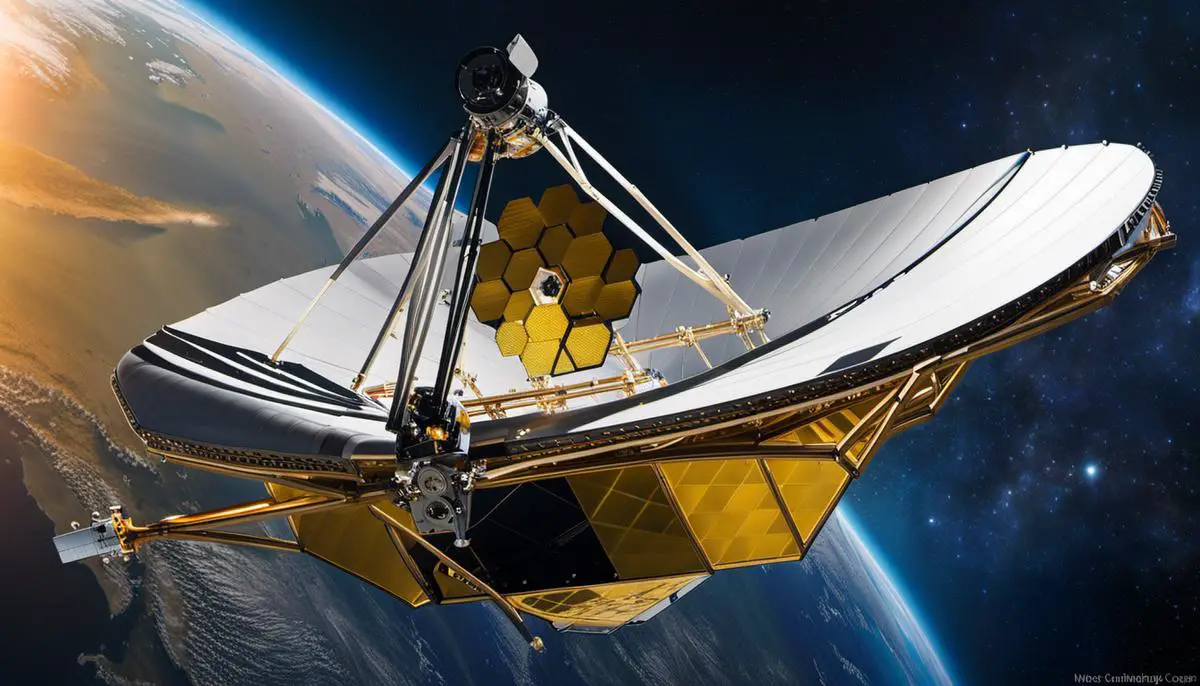
Peeking into the Early Universe
Diving Deeper into the James Webb’s Mission
A remarkable collaboration between NASA, the European Space Agency, and the Canadian Space Agency, the James Webb Space Telescope is poised to be the leading observatory of the next generation. It has a diverse gamut of research areas, one of its most groundbreaking being the exploration of the early universe. This essentially allows astronomers to “rewind” and examine the beginnings of time, an extraordinary leap in astronomical understanding.
Observing Ancient Galaxies
An essential part of the mission involves observing the oldest and most distant galaxies in the universe. The Webb Telescope’s infrared capabilities will allow it to cut through the cosmic dust that obscures these objects from other observational tools. These galaxies are expected to provide clues about the formation, evolution, and distribution of galaxies through cosmic time. Webb’s data could ultimately explore the birth and evolution of galaxies, dissecting the early universe’s physical conditions.
Seeing the Genesis of Star and Galaxy Formation
Another monumental task of the Webb Space Telescope is peering back over approximately 13.5 billion years to witness the first stars and galaxies as they formed from the darkness of the early universe. Collectively termed “first light,” this moment in cosmic history is currently shrouded in mystery. The telescope is designed to capture the faint light of these primordial objects, thus unlocking the secrets of the universe’s birth, fueling our understanding of cosmic reionization when the first objects lit the universe following a period of darkness after the Big Bang.
Penetrating Cosmic Dust
To enable this ancient observation, the James Webb Space Telescope has been equipped with advanced technological features. It houses a mirror much larger than the one aboard Hubble Space Telescope, along with improved imaging and spectroscopic instruments that work primarily in the infrared range of the electromagnetic spectrum. This allows the telescope to penetrate cosmic dust, which is often illuminated by the ultraviolet light stars emit and consequently obscures other telescopes’ observations.
An Enlightening Journey through the Cosmos
The James Webb Space Telescope is being prepared to take us on an unparalleled journey through the cosmos, from nearby astronomical phenomena to the remotest corners of the universe. Its mission is to investigate the life cycle of stars, the environments where exoplanets form and exist, our own solar system’s conditions, and the enigmatic structures and origins of the universe. In doing so, the Webb Telescope promises to open a new chapter in astronomical discovery.
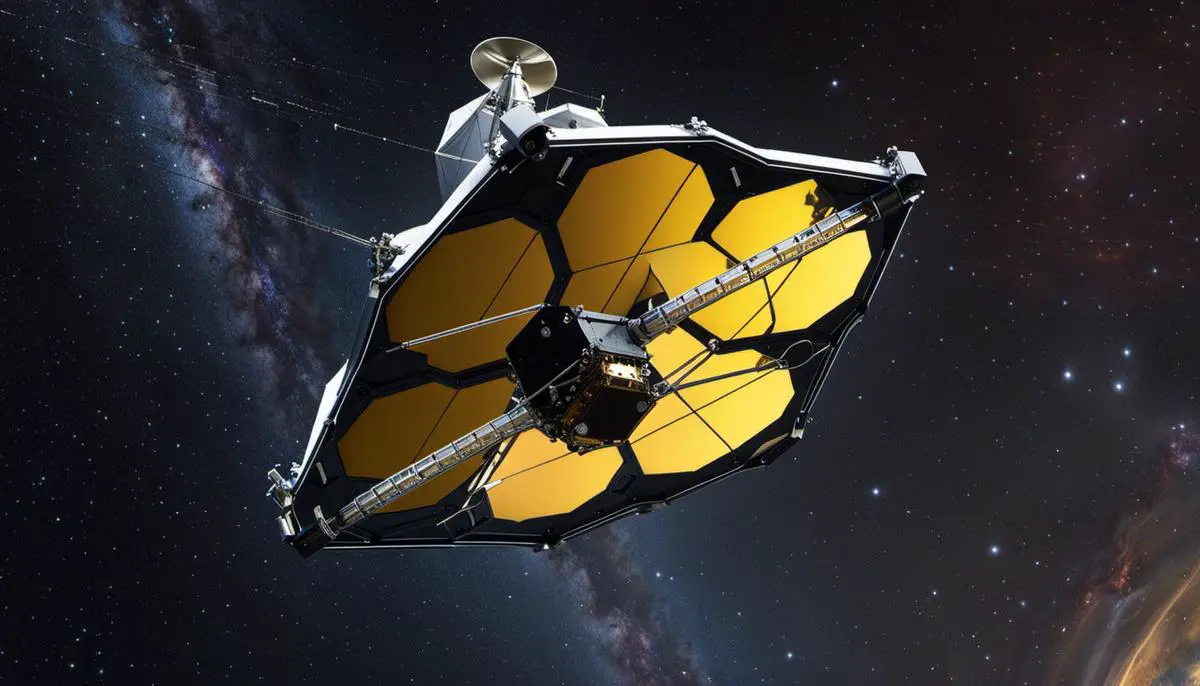
Searching for Alien Life
The Hunt for Alien Life with the James Webb Space Telescope
In addition to its broader explorations of the universe, the James Webb Space Telescope (JWST) has set its sights on an extraordinary scientific pursuit: the search for potential alien life. Standing at the forefront of its ambitious objectives, the JWST will utilize its state-of-the-art scientific instruments to examine exoplanets – planets that reside in orbits around stars beyond our own solar system.
The Unique Capabilities of James Webb Space Telescope
The JWST’s advantage over most other telescopes lies in its ability to study the atmosphere of these exoplanets. Equipped with the latest technologies and science instruments such as Near Infrared Camera (NIRCam), Near Infrared Spectrograph (NIRSpec), and Mid-Infrared Instrument (MIRI), James Webb will observe infrared light from celestial objects with unprecedented clarity.
Studying Exoplanet Atmospheres: Uncovering Signs of Life
By studying an exoplanet’s atmosphere, the JWST aims to discover possible signs of life. The telescope can detect the chemical compositions of these atmospheres by examining the starlight that filters through them. This technique, known as spectroscopy, could reveal the presence of key gases like water vapor, methane, and oxygen, which could hint at possible extraterrestrial life.
The Science and Technology Behind Life-Detection
The JWST will primarily use a proven scientific method called transit spectroscopy for exoplanet study. When a planet passes in front of its host star, some of the starlight passes through the planet’s atmosphere and carries away with it the unique fingerprints of the atmosphere’s constituents. By capturing and studying these fingerprints, scientists hope to discover the hidden clues of potential life-supporting conditions.
Further, the Webb’s ability to observe in infrared helps in detecting molecular signatures in the atmospheres of exoplanets because molecules absorb light at characteristic wavelengths in the infrared part of the spectrum. This technology leads to the possible discovery of extraterrestrial life signs.
Embarking on an Unprecedented Cosmic Voyage
Our curiosity and drive for discovery have always been met with the vast expanse of the universe and the limitations of our fledgling space exploration technology. But, the advent of the James Webb Space Telescope (JWST) marks a monumental stride in our cosmic journey, particularly in our hunt for extraterrestrial life. By understanding the secrets of the universe in greater detail, we might unearth groundbreaking knowledge that could potentially reshape our conventional wisdom about life beyond our home planet.
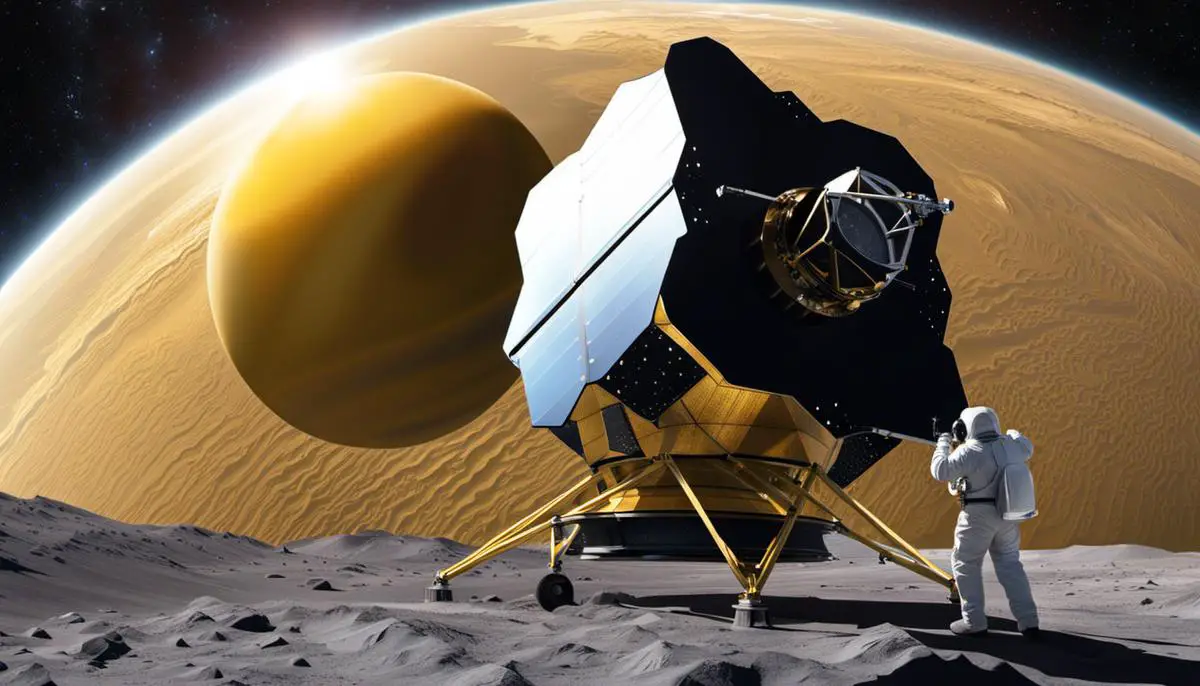
Supporting Astronomical Research
The James Webb Space Telescope: Redefining the Boundaries of Space Research
Considered the successor to Hubble and a game-changer in space research, the James Webb Space Telescope (JWST) is the fruit of a collaborative effort between NASA, the European Space Agency (ESA), and the Canadian Space Agency (CSA). It’s set not only to enhance the field of astronomical science but also to revolutionize it. The telescope aims to discover the furthest celestial bodies in the universe, analyze their composition, and enable scientists to journey into previously unknown regions of space.
An Upgrade from Hubble: Webb’s Improved Capabilities
The JWST is designed as a successor to the Hubble Space Telescope. With a primary mirror that’s nearly three times larger in diameter than Hubble’s, the JWST will allow astronomers to collect more light and thus see faint, distant objects more clearly. Additionally, the JWST operates in the infrared range of the electromagnetic spectrum, providing a new view of the universe compared to Hubble’s focus on visible and ultraviolet light.
Unlocking Secrets of the Universe: Unseen Phenomena and Distant Stars
One of the most exciting aspects of the JWST is its ability to probe the mysteries of the universe. Scientists hope it can provide insights into dark matter and dark energy—two elusive and poorly-understood phenomena that together make up 95% of the universe.
Additionally, the telescope should be able to detect the light from the first stars and galaxies that illuminated the universe billions of years ago. By observing them, we will be able to understand better how stars were formed and how galaxies evolved over time.
Exploring Extrasolar Planets: Peering Into Atmospheres
The JWST will also contribute significantly to our understanding of extrasolar planets—planets that orbit other stars outside of our solar system. The telescope’s unique capabilities will allow it to study these planets’ atmospheres in detail, potentially revealing the chemical signatures of life, known as biosignatures.
In contrast to previous telescopes that could only infer the existence of exoplanets, the JWST will enable detailed investigations of their atmospheres, including their composition, temperature, weather, and other characteristics. This could dramatically increase our understanding of these distant worlds, potentially opening up new opportunities for the study of astrobiology and the search for extraterrestrial life.
Data as Fuel for Future Research: Enormous Opportunities for Discovery
Beyond its own discoveries, the JWST is expected to fuel countless other research projects. As it gathers and sends back data, it will provide scientists worldwide with a wealth of information to analyze for years to come.
By offering an unprecedented view of the universe, the telescope will enable a vast range of research opportunities across different areas of astronomy and astrophysics. This includes the study of star and planet formation, galaxy evolution, and the nature of the early universe. The discoveries made using JWST data could lead to major advancements in our understanding of the cosmos and humanity’s place within it.
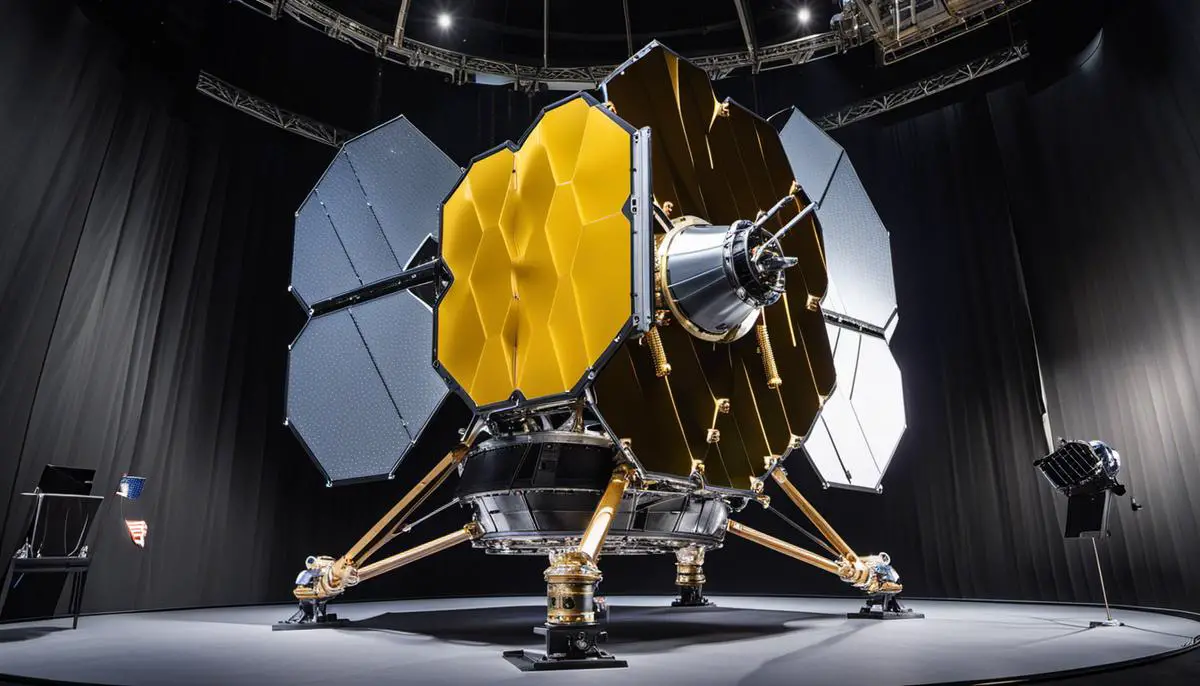
The James Webb Space Telescope serves as a testament to humanity’s innate desire to explore the unknown, to push beyond the barriers of our own world and reach for the stars. Its mission to unravel the ancient mysteries of the universe, as well as seek potential signs of life on distant exoplanets, is a beacon of our potential for further exploration and discovery. More than a telescope, it provides the critical data necessary to propel astronomical research into a new era. The revelations and knowledge sprung from its observations will continue to illuminate our understanding and irrevocably shape our perspective of the universe. As we decode the infinite celestial stories whispered across time and space, we unlock the key to understanding our own existence and our place in the cosmos.
![]()
